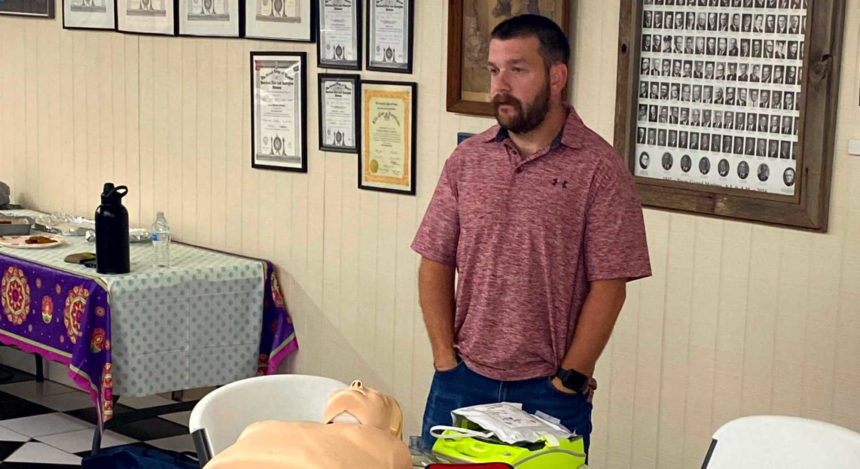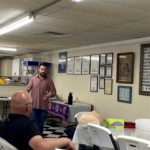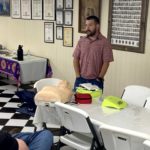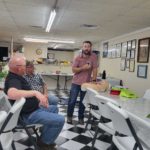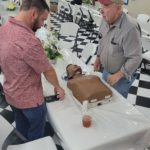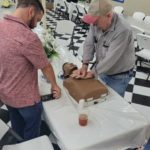The Bolvar Masonic Lodge received CPR and AED training from Brother Cole Belew. CPR stands for Cardiopulmonary Resuscitation. It is a life-saving emergency procedure used when someone’s breathing or heartbeat has stopped. CPR is performed to maintain circulation and oxygenation in the body until more advanced medical help arrives.
The main steps in CPR typically include:
- Check for Responsiveness: Before starting CPR, check if the person is responsive. Shake them and shout their name. If they do not respond, it’s a sign of a problem.
- Call for Help: If someone is with you, ask them to call 911 (or your local emergency number) immediately. If you are alone, call for help after starting CPR.
- Open the Airway: Tilt the person’s head backward and lift the chin to open the airway.
- Check for Breathing: Look, listen, and feel for signs of normal breathing. If the person is not breathing or is only gasping, it’s a sign to start CPR.
- Start Chest Compressions: Begin chest compressions by pushing hard and fast in the center of the chest (usually at a rate of 100-120 compressions per minute).
- Give Rescue Breaths: If you are trained in CPR and comfortable giving rescue breaths, provide them after every 30 compressions. Otherwise, continue with chest compressions only.
- Continue CPR: Keep performing cycles of chest compressions and rescue breaths until the person starts breathing on their own, professional help arrives, or you are too exhausted to continue.
CPR can vary slightly depending on whether it’s being performed on an adult, child, or infant. It’s essential to receive proper CPR training and certification to ensure that you can perform it effectively in an emergency situation.

